About This Episode
It’s hard to overstate how important the Central Valley is to the past, present and future of California. The Valley is urban, suburban and rural California all at once. The Valley is a place where we can truly see the amazing infrastructure and terrifying contradictions that are literally and figuratively built into our state. As someone from Northern California, the Center of that center is the Northern San Joaquin - Merced, Stanislaus and San Joaquin counties, places like Patterson, Manteca, Lathrop, Los Banos and Gustine, or the cities of Modesto and Stockton, the 109th and 59th largest cities in America. There is Tracy, home of both my amazing producer and one of today’s guests, NPH Policy Director Abram Diaz.
In Northern California Area Code speak, this is the 209, a semi-legendary place known for toughness, amongst other things. Add all these communities together and you find a place with more than a million and a half people, mostly people of color, living in small unincorporated communities and big cities and sprawling suburbs and everywhere in between.
A while back, I was sitting in my yard with Muhammad Alameldin, a friend and policy associate at Terner Center, talking about Stockton, where he is from. I don’t remember whether it was before or after Muhammad went to work for David Garcia, the Terner Policy Director who is also from Stockton, but this interesting coincidence led us to start to play “who else in California housing is from the 209 geography game”? This led us to the aforementioned Non-Profit Housing Association of Northern California’s Policy Director, Abram Diaz and to Melanie Morelos, the California Strategy Senior Program Manager at the Greenlining Institute.
It was clear to both of us that having key voices in the next generation of California housing policy makers be from the 209 meant something. We weren’t sure exactly why it matters - is it about representation from a historically marginalized and misunderstood part of California, or is it more than that? Is there something about the Northern San Joaquin and how it was built and who lives there that prepares people to see the full California, and perhaps make a more complete and inclusive housing policy?
This is the subject of today’s debut of Housing After Dark, the Where We Go From Here podcast. Housers from the 209. What we can learn from them, and housers can all learn by paying more attention to the Central Valley.
This Episode’s Guests
Interview Transcript
Alex Schafran: I wanted to start with the question that Muhammad and I started to chop up in the backyard long ago - the fact that more and more people in positions of influence in housing policy come from San Joaquin or Stanislas or Merced counties, and the question of why this is important. Is it just a question of representation? Or is there something about the place where you all grew up that matters?
Abram Diaz: It is a really interesting topic. So I was born and raised in Tracy, California as a first generation son of Mexican immigrants, and I actually grew up painting homes with my dad. So it's quite literally within the housing construction sector, working to build homes in Tracy and the larger Bay Area.
I really see how the 209 is so representative of a lot of California housing opportunities and problems. Tracy in itself is almost a definition of ‘drive until you qualify’ - folks who couldn't afford to live in the Bay Area move over the Altamont Pass to a place where they could buy a home and raise their family. I feel like we lived in and saw what the future of California would look like - these very centralized economic centers, the expanding sprawl around them, super commuters literally living their days driving back and forth over the freeway to their job.
And this wasn't really the California dream that so many folks came here for from other regions, states, or countries. That's why I think the 209 is so represented in the housing space, and why we play such an important role: we're living and seeing many of the real world world effects of the crisis.
A lot of what we're seeing across the nation's housing crisis can be found in the [Central] Valley, and I think that's a big reason why so many of us are so motivated. The issues we experienced very early on in the suburban areas are being felt across a lot more of the country and the State. It's that pressure that first sparked my interest.
Alex Schafran: Melanie, I know there are aspects of that story that are similar for you.
Melanie Morelos: Absolutely. First, I really appreciate this opportunity to sit down with you and everyone else here. We've seen each other in so many different phases of our careers, and I’m looking forward to doing big things together.
Representation is something I really want to hone in on. It paints an important picture of why I'm working in Sacramento and in this particular space. I had an opportunity to grow up in different communities. When I was younger we lived in Gilroy, and then moved to Los Banos when I was in the second grade. My parents purchased a house for about $80,000 in 1980, and Zillow said the house just sold last September for almost a million dollars. It's pretty crazy what a couple of decades can do to the housing market.
Gilroy and Los Banos are different communities. If you get on the 152 in Gilroy and drive to Los Banos, you're greeted with a big cloud of polluted air. It's pretty much just one street of a highway where there are gas stations, dollar stores, asthma centers, all kinds of empty lots with failed businesses and a stomping ground for KB Homes, which is a pretty big single family Home Development agency out there. There isn’t much rental housing, and what there is isn’t generally multi-family.
Talk about environmental injustice - it certainly gives me a different perspective on different types of inequality. My dad had a small business, my mom worked retail. I think I get really fired up on this issue because the house that my parents bought is below the railroad tracks, and it's part of a low income community with one affordable housing complex in a reutilized old cannery. When you cross the railroad tracks, there are beautiful parks, there's a new baseball field, there are roundabouts and physical walls separating these neighborhoods, separating the single family home neighborhood from everywhere else. Redlining still does exist today, discriminatory practices still exist, and it is so apparent and so visible - it hits you right in the face. I’m lucky to work on these things now with the Greenlining Institute, and this issue of racial equity has been so hard to unravel. It's important to have representation at the table - we all come from different stories, but we need more people like us at the table.
Alex Schafran: I think it's great that we are centering both the rural parts of the Valley - or really Valleys, including the Salinas Valley and other places like Sonoma where the Bay Area and rural agriculture come together - and the urban parts of these more rural communities. Speaking of which, I think it's time to bring in our friends from Terner: David Garcia and Muhammad Alameldin, both of whom come from Stockton, which is a city and a suburb and a rural space all at the same time.
David Garcia: So why is it important that folks from the northern part of the San Joaquin Valley are in the housing space at the State level? I thought a lot about this in regards to housing, but also other facets of the State. There is no California without the Central Valley. That is the start. There is no Silicon Valley. There is no Bay Area as we know it today without all of the people in the Central Valley who stand that up, and who make the Bay work. That's true from an agriculture perspective and it's true from a general labor perspective.
The Valley is an afterthought for a lot of folks who are really engaged in Sacramento or the Bay Area. We continue to feel the impacts disproportionately when it comes to housing and climate change. Unfortunately, the Valley is underrepresented when it comes to political power so we get left out of a lot of conversations, not just around housing, but around all statewide legislative efforts. We think in terms of getting the votes from the Bay Area and Los Angeles, and that's pretty much it. And if [the policy] works in the Valley, then great. If not, if there are negative consequences in the Valley, it doesn't matter, because those are not the votes that are needed.
Getting specifically to the housing question, there are tens of thousands of workers every day, even in a virtual workplace environment, who are driving over the Altamont Pass to work in the Bay Area, to work on a construction site, or to clean homes, or to work blue collar jobs, but can't afford to live in those same communities. The housing policies we talk about are often times very specific to get more people to be able to live in those communities [where they work], but they're also a bit blind to the folks who already live in the Central Valley. How do we make their lives better? What - if we want to hit our [Vehicle Miles Traveled] targets in our greenhouse gas reduction goals like - does that mean for the Central Valley?
We don't tend to have those conversations. If we do, they're kind of in passing, or frankly kind of lip service to the communities that would benefit. So that's why I think having us and and others [from the Valley] engaged in all sorts of policy conversations at the state level - whether it's housing or climate or transportation - is really critical. There is so much that the Valley does for the rest of the state, and the state doesn't reciprocate.
Muhammad Alameldin: When we talk about the housing crisis in general when it comes to State of California, it's the lack of housing that’s built in the coastal cities, but it's also the lack of opportunity that is available in the Central Valley. There's a lot of talk about Cal Poly Stockton, or CSU Stockton. [Stockton] is one of the most diverse cities in the United States, and it’s three times the distance to a public [higher education] institution compared to any other metropolitan area.
People are driving from Stockton to work jobs in the Bay Area, and driving back, and it's three hours round trip. There is a Terner paper that shows that for people that do commute, if they had a job in Stockton, they would make the same amount of money [even if wages were lower], because you break even with car costs, gas, and time.
We need to realize that families are being disconnected every day. Most of my friends growing up didn’t have their parents there at the end of the day. It’s something that impacts us emotionally, mentally and professionally. We're depriving such a cornerstone of our state. Stockton is still one of the biggest cities in California, but we put practically no investment at the State level into this area.
That's why I live in Berkeley. I can't work a job like at the Terner Center in Stockton, California, and that's an issue. What kind of representation do people in Stockton have? Stockton is the same size as Pittsburgh [Pennsylvania], but no one talks about Stockton in the same way they talk about Pittsburgh.
Alex Schafran: We forget just how many people live in the central part of California. We think about it in terms of production, or what comes out of the Central Valley, but as a lived experience it seems so ignored. So let’s fast forward to today: you all are involved in organizations that are fighting for better housing policy statewide, not just in the Valley. What are your priorities for change?
David Garcia: I wish that California had more flexibility with the tools that we do have to try and solve the housing crisis. I look a lot at other States and what they are doing, and they have the ability to use things like property tax incentives to try and get more projects to work with affordability on site. We can’t do that in California because of our tax system. Other states have tax increment financing, which California essentially got rid of when redevelopment agencies were shut down. There are limited ways in which we can still use that, but generally it is not a tool available for housing production in California anymore.
In some ways we have tied our hands behind our backs, either because of voter initiatives or because of short-sighted policy decisions. As a result, I think we don't have all of the tools that we need to properly address this crisis. If we had the political courage to take on these big picture things - they aren’t necessarily third rails, but they are very difficult politically - we would come out ahead. I also think California's done a lot right. The housing element process has become a model for other states. The Governor of New York just recently announced that they are going to do something similar. So I think that is very positive.
Melanie Morelos: I first want to recognize that this housing crisis is an intersectional issue with many different connected pieces of the puzzle. It's environmental justice, investment in equitable infrastructure, labor issues. It’s an affordability crisis. I think if we're talking politics, and David alluded to this earlier, it’s not having enough representation.
I think another piece of this is home ownership opportunities. Owning a home was part of the American dream, the California dream, but it's just not realistic anymore for most working class people and even middle income earners. Buying a home in Sacramento is out of the question for me right now, and I have a good job. We also need to talk about the rental affordable affordability crisis, and how those [homeownership and renters rights] can work together.
We're all working in different corners of the housing crisis. There are so many different aspects to this housing crisis that it's certainly not going to be solved if we just say it's a simple crisis. I think the work that I do here at Greenlining now is trying to cultivate this narrative between [housing issues] that haven't necessarily got along.
Abram Diaz: I think California as a whole needs a big shift in attitude, and one that I believe is currently happening. The folks we have on the podcast today are very important - I can't say enough as a former legislative staffer how often the legislators I worked for and worked with would turn to Terner Center reports to advance their knowledge and thinking on these issues. Having Melanie helping us understand how housing policy and environmental policy should align is very helpful to our efforts at a state wide level to address the issues.
Getting people to yes is really important, at both the state and local level. A big part of that is streamlining, ensuring that we are actually able to build these projects a lot faster. We've been under-producing by historic margins for a few years now, and we need to be over-producing if we want to fill affordable housing and general housing gaps. We also need accountability, and that comes with the Governor's housing accountability unit and local housing element plans, and we need to actually make sure that we meet the goals that we've set.
We also need new funding mechanisms, as David pointed out. The Nonprofit Housing Association of Northern California is working very closely with partners on a statewide ballot initiative to lower the voting threshold on housing bonds from 2/3rds to a simple majority. The big idea behind this measure is that we had a fundamental shift in how we funded affordable housing when redevelopment was lost. We need another fundamental shift in how we fund our affordable housing production now, and we think voters are willing to go there.
Finally, NPH is very happy to be co-sponsoring and leading Senate Bill 4, by Senator Scott Weiner from San Francisco, which is a bill that would streamline the production of fully affordable units on land owned by faith institutions. This is our third time trying it, but I've never been more hopeful. The amount of grassroots support we’ve got from across the State has been incredibly impressive over the last couple of weeks. We have representatives from across the board. I've got letters of support from Jewish organizations, Catholic organizations, the Muslim Public Affairs Council. There are a lot of different folks that are calling to address our affordable housing and homelessness crisis.
I'd like to see that applied more universally, and I got to give a huge shout out to Melanie's former boss, Assemblymember Buffy Wicks and her great work to streamline production on commercial lands. So change in attitude, faster production, and funding for affordable housing production.
Alex Schafran: I think you've all given us really diverse perspective on transformation in state housing policy. What kind of transformations do you think need to happen back home in the Valley?
David Garcia: In Stockton specifically, but I think this is true of most urban areas in the Central Valley like Modesto or Fresno, we see one type of housing. It is the large single family home, and that's been true for decades. I think the challenge is how to align these huge, ambitious climate goals as a State with where we are building housing.
When we look at the Central Valley, the opposite is happening. We are creating thousands of new homes, which on one hand, is a good thing for supply. But they're being built in a manner that is only going to increase Vehicle Miles Traveled, and is really going against what we say we want to do as a state. We require all these Sustainable Community Strategies and to have a housing element that identifies where more dense multi-family can be built. But then it doesn't get built.
I think the challenge we have is how we balance the need to create more housing in the Central Valley, but actually incentivize it to be built in the Bay Area or Los Angeles along transit lines, or in areas where people are not going to drive as much, because right now that just doesn't work.
Part of my background is working in real estate development in Stockton years ago. Part of the challenge was not a lack of enthusiasm to build new market rate housing in, say, the downtown area. The challenge was the financing and making it work. For all of the requirements that we put on developers to build new housing, it only works in places where you can charge pretty high rents. You can recover those costs in a places like San Francisco and Oakland, where people and the market can bear that. In a place like Stockton or Fresno or Modesto, you see next to no infill development because the costs are still really high, even though you're not in San Francisco, and the rents are half, if not less, than what you would get in a comparable or urban environment. There is no mechanism to close that gap, and I don't know what that could be. In the past, that was redevelopment. If you look at Fresno, a lot of the development they have in the downtown was supported through redevelopment, but that doesn't exist anymore.
So there is no other financial mechanism to build infill development in the Central Valley, unless it is a 100% affordable project. You actually see a decent amount of that if you go to downtown Stockton, and there are a couple of projects that I worked on while it was in Stockton. They're all % Low Income Housing Tax Credit projects, which is great, but that's the only thing you built there. We're kind of concentrating all of our affordable housing in one place, and all the other production is just happening in the periphery, which is, in my opinion, kind of an exclusionary land use pattern, and one that I would say is kind of the antithesis of the values we say we have when we talk about housing in California.
Melanie Morelos: I want to stoke this idea about defining density for the Central Valley. When we talk about density, we're talking about urban communities. We're talking about LA, San Diego, San Francisco, but we don't talk about what density looks like for Central Valley communities. We need to cultivate this conversation about what density looks like for that part of the State.
I think another piece is more economic investment in the Central Valley, and transportation. I was a commuter growing up. We went over the Pass twice a day in gas powered vehicles. If we're going to start meeting these [climate] goals, we also need to provide accessible, equitable transportation infrastructure that is going to lead to less pollution, providing an alternative to buying these large trucks.
The last thing I'll say is about Sacramento. I live in downtown. I live in a fourplex, next to a rail line. I have bars, grocery stores and restaurants as soon as I step outside. But the thing that we're facing in Sacramento is the homelessness population. I think we've exceeded San Francisco's unhoused population. I wonder what happens to people in times of extreme heat, or when it's really cold or during storms. I think the problem with Sacramento is that we don't have enough wrap around services for mental health issues and domestic violence cases.
My point here is that every community is very different, and the needs of that community are different from the needs in other parts of the State.
Alex Schafran: I really appreciate everything that you all have brought up, especially the breadth of it too, and that's a commitment I'm trying to make in my writing and in this podcast. And I’m also here for conversations about Central Valley Futurism.
Abram Diaz: My hometown of Tracy is the closest [209] city to the Bay Area, and so they face a huge crush of folks who move looking for a little bit of space. But they're going to need a real attitude shift in terms of their housing policy. The voters have rejected ballot efforts to ease the construction of affordable housing in the city by some eye-catching numbers, and it pains me to see. It’s frustrating to see the resistance to new smart growth in Tracy, especially when we're facing the consequences of the Bay Area's resistance to building housing. Now we're going to commit the same [mistake] a few years later.
Can we be more forward thinking about how we build housing? How do we allow more density? How do we build for young families? Otherwise, we're going to keep losing folks. I have a lot of friends moving to Nevada and Texas. I'm hoping to see Tracy shift a bit - I've seen a little bit of that shift at the local political level among some council members, but the city as a whole is going to have to relinquish some of their slow growth mannerisms from the past few decades, and hopefully that sort of shift and attitude can be replicated across the State, and across the Central Valley as well. Folks need housing, they need it now, it has to be affordable, and we're not going to get there without increased production.
Muhammad Alameldin: I wanted to bring up just a few more points when it comes to job creation and opportunity. Right now it has one of the lowest college degree rates. We need to build a public university in Stockton.
We need to build nonprofit capacity within Stockton. I used to work at Greenlining and now I’m on the Board of Directors. We worked on a transformative climate communities program through the State in South Stockton because the only organization that could do the project was Greenlining (all the way to Oakland). They've done a great job, but there isn’t nonprofit infrastructure [in or around Stockton] to administer programs.
Finally there’s transportation. The Valley Link project needs to happen very soon. People can't keep driving across all the passes every which way. It's a dangerous commute, it's a tiring commute, and it's hours long. We really need to connect northern California.
I do like this vision of these Central Valley cities looking more like Sacramento. They could be rebuilt to be more walkable. They could have more access to transit. That's my dream for the Central Valley - a place of opportunity.
Alex Schafran: Thanks to everybody for participating, and for really pushing us to think beyond housing. One of the reasons why I think it's so important that folks from the Central Valley make housing policy is because you can't see housing as separate from water and transportation, and all these other systems.
You see this on a day to day basis in the Valley. You can see the other parts of the infrastructure. You can see the inequality and the way housing plays a role in a large urban development system. I think that can often get lost in housing politics in the Bay Area, where everybody is fighting to preserve these systems that they can't see, and that they don't know where they came from.
Hearing you all talk so interjectionally about all the other systems, inequality, the unhoused, and issues of race and gender and class really pushes that conversation forward. I'm excited that you all are in the positions that you're in. Thanks for being here, and for your ongoing work to make California better.




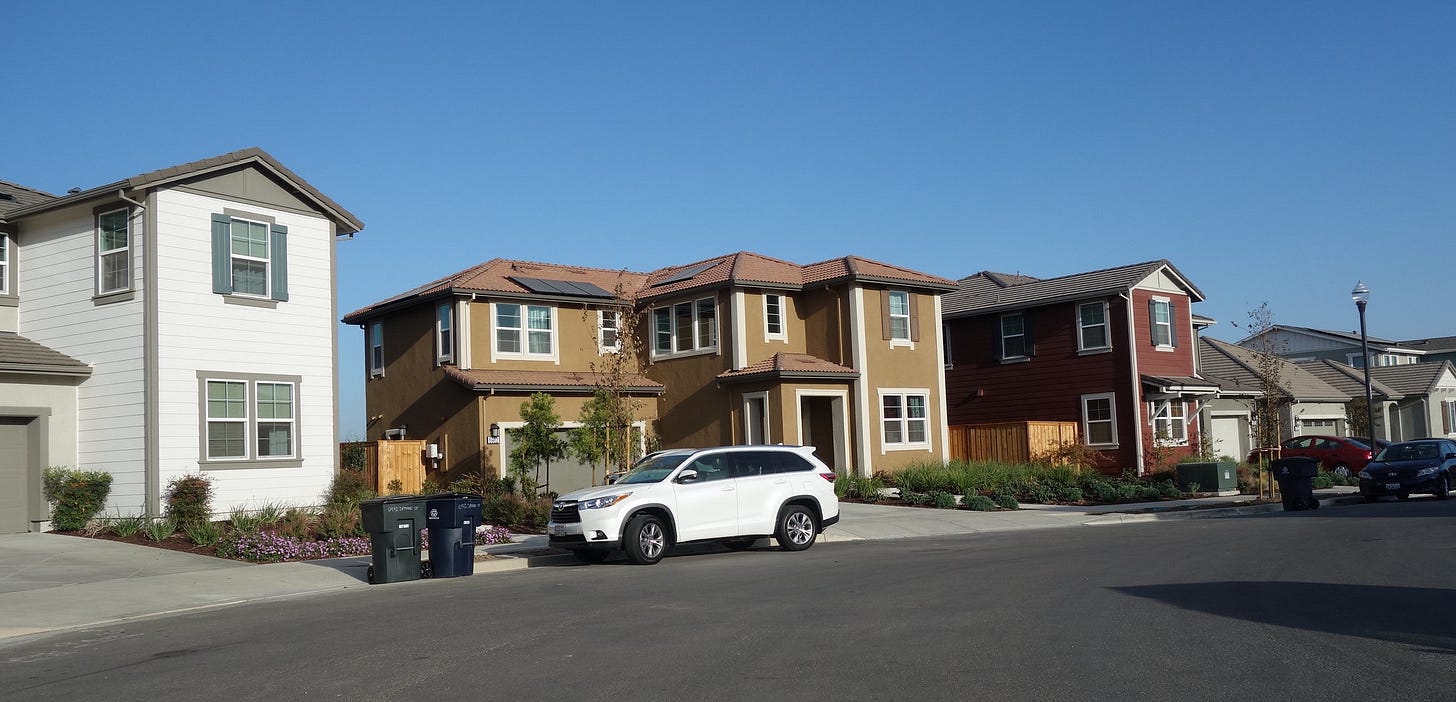





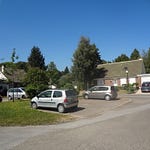

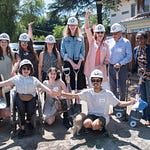
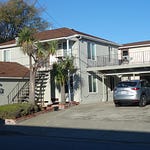
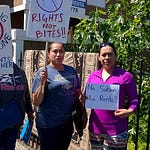
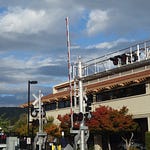


Share this post